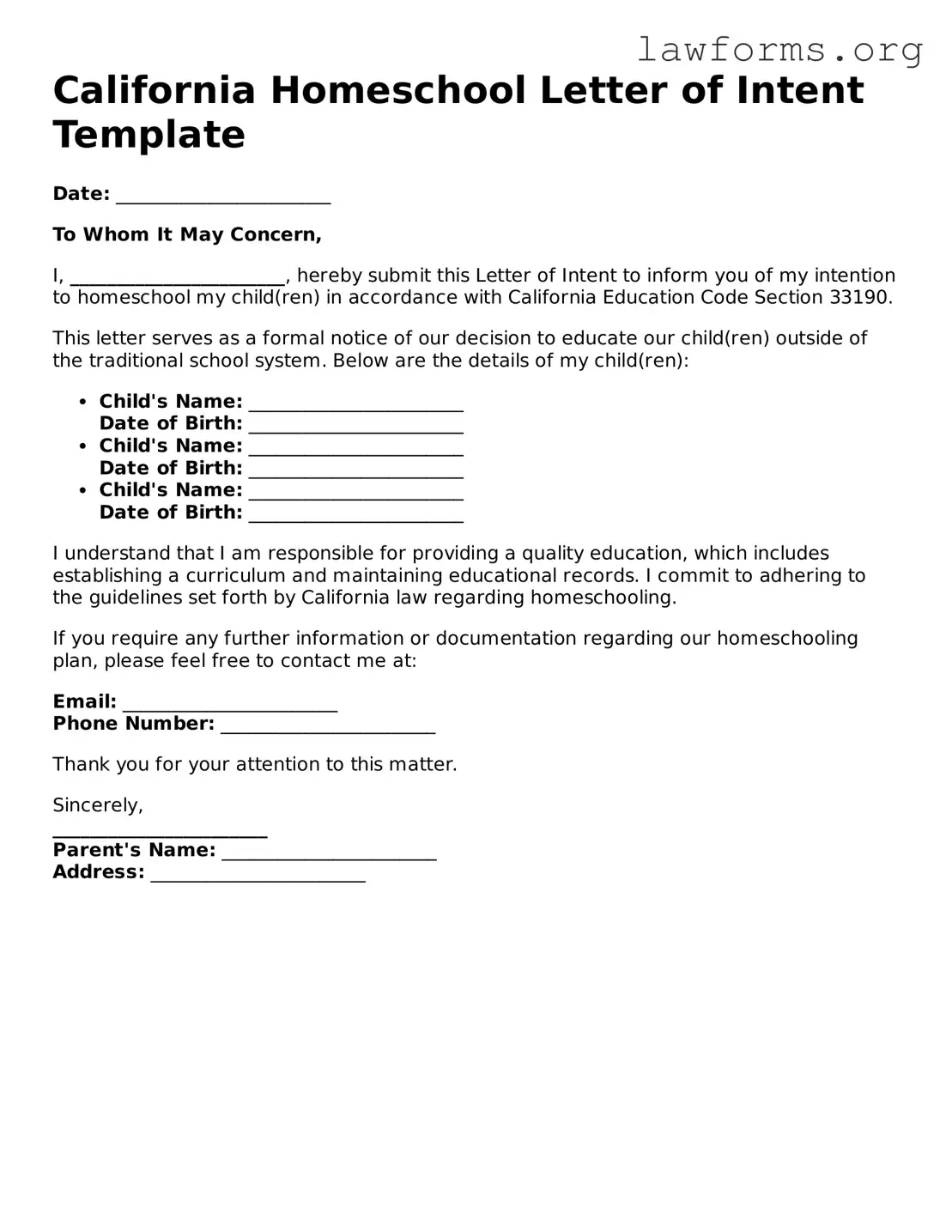California Homeschool Letter of Intent Template
Date: _______________________
To Whom It May Concern,
I, _______________________, hereby submit this Letter of Intent to inform you of my intention to homeschool my child(ren) in accordance with California Education Code Section 33190.
This letter serves as a formal notice of our decision to educate our child(ren) outside of the traditional school system. Below are the details of my child(ren):
- Child's Name: _______________________
Date of Birth: _______________________
- Child's Name: _______________________
Date of Birth: _______________________
- Child's Name: _______________________
Date of Birth: _______________________
I understand that I am responsible for providing a quality education, which includes establishing a curriculum and maintaining educational records. I commit to adhering to the guidelines set forth by California law regarding homeschooling.
If you require any further information or documentation regarding our homeschooling plan, please feel free to contact me at:
Email: _______________________
Phone Number: _______________________
Thank you for your attention to this matter.
Sincerely,
_______________________
Parent's Name: _______________________
Address: _______________________
